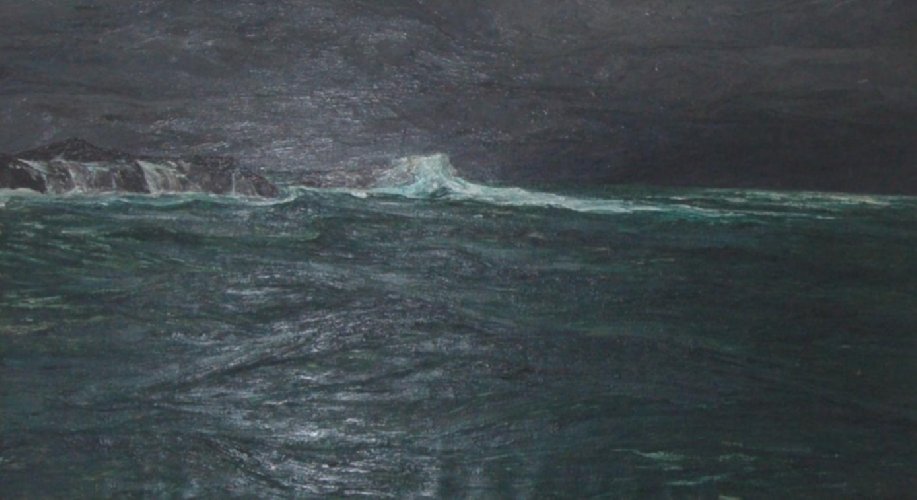Description:
August Philippe Matisse (1866-1931), a French painter of the late 19th and early 20th century, lived and worked on the Breton island of Bréhat. His name was often mistaken for that of another contemporary artist, Henri Matisse, although there was no relationship between them. He studied at the Academy of Fine Arts in Dijon and then continued his studies at the Académie Julian in Paris, where he became a student of Léon Bonnat. From 1895 until his death, he belonged to the Société des Artistes Français, at whose Salons he often showed his awarded paintings. He also left his mark in the history of the Autumn Salons, exhibiting his works several times in the prestigious Grand Palais hall.
A.P. Matisse’s work is mainly known for its maritime landscapes, depicting fragments of the coast or sailing boats. A large part of his artistic work is also devoted to the wave itself, whose movement is stopped on the canvas surface. Although he usually used oil paints in his work, it should be mentioned that he also specialized in stained glass art, and in 1924 he prepared one of the official posters for the first Winter Olympic Games in Chamonix, France.
Description of the painting:
“The Sea” presented in Rogalińska Gallery shows a composition whose main theme is a wave breaking against rocks. They are located at the height of the horizon line on the left side of the painting field. The central part of the canvas is occupied by the figure of a foaming sea wave, which is the brightest color accent. Its announcement can be found at the right edge of the work, which is signaled by white, small brush strokes. They clearly emphasize the division of two zones: the sky and the water submerged in darkness. Their dark color range is a combination of shades of gray and purple, which stand out in the upper part of the work and navy blue and green, which predominate in the lower part. The entire surface is filled with irregular lines creating a dynamic space of the painting. They give the impression of being carved due to the impasto technique used by the artist: the paint was applied in thick layers, which contributed to the effect of roughness of the texture.
This work is the first of three discussed in the cycle “Seafaring Tales”. Where will the waters take us next? We will find out on Wednesday. (We won’t drift too far, we will still


